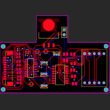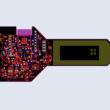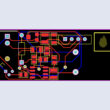Hardware engineering is a highly interesting field, with a number of steps involved in its product designs. Any single device might have hundreds of circuits involved, each with thousands of components. This means that these designs are quite complicated, and any changes made to them might cause a chain reaction across numerous components. Every little aspect matters, so it is necessary to keep track of all the changes, and have a written record of all the elements of these designs.
If no records are kept, then any product design updates or variants will need a whole new set of instructions and engineering effort. This is a highly inefficient practice, completely unsuited to the fast-paced standards of these days.
Therefore, there is a need for a mechanism which allows users to update product designs and/or make variants without having to go through the arduous task of making every single element all over again. Version control is the most convenient mechanism for this purpose, and is quite useful for the hardware engineering lifecycle.
How can version control be used to update product designs?
Version control simplifies product design extensively due to its numerous branches, with various changes and features added in each subsequent branch. This means that engineers can go back to one of the rudimentary branches and create a variant of the product, or add new features to the branches to update and test the designs. They can do this without affecting the actual product design, and without altering the work other engineers may have done. All they have to do is clone the designs and get to work on their own copies of the branches.
Once these changes or features have been finalized and tested, they can commit them to the Master branch, or create a new repository for the updated version or new variation of the product. It’s as simple as that!
On top of all this, these updates will be communicated to all the stakeholders, so that they can adjust their behavior accordingly. For example, suppliers can send over the inventory required for the updated product, and manufacturers can start manufacturing it as soon as possible. Managers can also approve these updates and give feedback where necessary.
With version control, updating a product design is not an arduous task, and becomes quite convenient. InventHub makes this even easier with features such as visual differencing and annotations. Visual diffing allows users to see just what had been updated, while annotations allow the team to communicate their concerns and suggestions in real time.
This eliminates the need for conventional communication methods such as phone calls and emails, which do not show the complete picture, and waste a lot of precious time better utilized in the actual production process.
Therefore, updating product designs using version control is an excellent practice which boosts productivity and minimizes any miscommunication in the product design life cycle. Go ahead and check out our help center so that you can understand these processes better and use InventHub to maximize your hardware design productivity.








